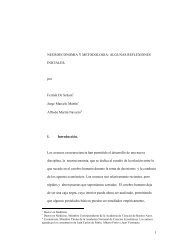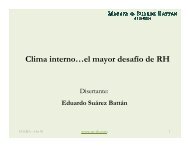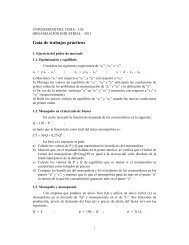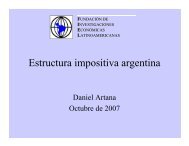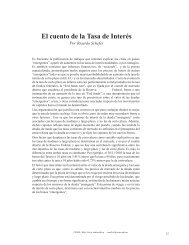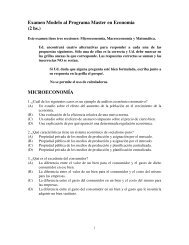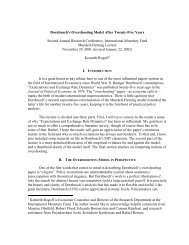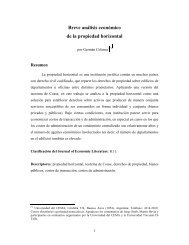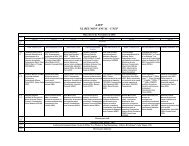Universidad del CEMA Master in Finance Research Work ...
Universidad del CEMA Master in Finance Research Work ...
Universidad del CEMA Master in Finance Research Work ...
Create successful ePaper yourself
Turn your PDF publications into a flip-book with our unique Google optimized e-Paper software.
Date<br />
Spot Futures Debt amount<br />
Exchange rate Exchange Rate <strong>in</strong> EUR<br />
(EURUSD) (EURUSD)<br />
Debt amount<br />
<strong>in</strong> USD<br />
Loss/Ga<strong>in</strong><br />
Futures Position<br />
2-Jan-03 1.0359 $ 1.0250* ** $ -<br />
20-Oct-03 1.1646 $ 1.1640 £¥¤§¦©¨¦¦¨ ¦¦¦ $ 12,111,840 $ 1,442,125.00<br />
On October 20, the company shall pay off the obligation for the amount of EUR<br />
10,400,000. To such purpose, the company closes out its position <strong>in</strong> the futures<br />
market, thus receiv<strong>in</strong>g USD 1,442,125. S<strong>in</strong>ce its obligation <strong>in</strong> US dollars as at<br />
October 20, is of USD 12,111,840, the company shall add to the futures position an<br />
amount of US dollars equal to USD 12,111,840 – USD 1,442,125 = USD 10,669,715<br />
to purchase EUR 10,400,000, and <strong>in</strong> this way to pay off its obligation.<br />
(*) (**) Like <strong>in</strong> the case of the spot FX market hedge, s<strong>in</strong>ce we do not exactly know<br />
the borrow<strong>in</strong>g rates the company may obta<strong>in</strong> <strong>in</strong> USA or <strong>in</strong> Europe, we are not able to<br />
accurately calculate which amount the company’s obligation of EUR 10,400,000 as of<br />
January 2 represents <strong>in</strong> Euros and <strong>in</strong> US dollars as at October 20, 2003.<br />
Analysis of Basis Risk<br />
There are a number of reasons why hedg<strong>in</strong>g us<strong>in</strong>g futures contracts works less than<br />
perfectly <strong>in</strong> practice:<br />
1. The asset to be hedged may not be exactly the same as the asset underly<strong>in</strong>g<br />
the futures contract.<br />
2. The futures contract’s expiration date may be different to the hedge’s<br />
expiration date.<br />
3. The hedge amount may not co<strong>in</strong>cide with the exact number of futures<br />
contracts.<br />
In our case, we will only discuss the basis risks described <strong>in</strong> item 2 and 3 because the<br />
basis risk of item 1 is not applicable s<strong>in</strong>ce there are currency futures contracts to<br />
hedge the exchange-rate (the Euro).<br />
Def<strong>in</strong>ition of Basis Risk<br />
The basis risk <strong>in</strong> a futures contract hedg<strong>in</strong>g is def<strong>in</strong>ed as follows:<br />
Basis = spot price of asset to be hedged – futures price of contract used<br />
If the asset to be hedged and the asset underly<strong>in</strong>g the futures contract are the same,<br />
the basis should be zero at the expiration of the futures contract.<br />
20



